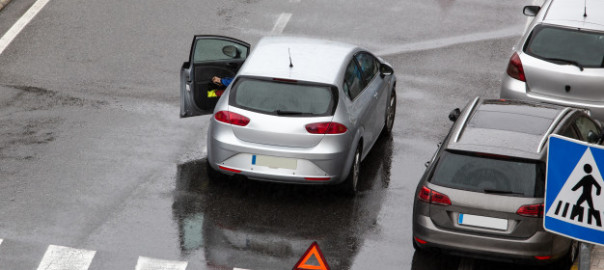Here at Towing Chicago, we’ve seen our range of automotive accidents and off-road incidents that require vehicle towing and rescue. In this blog entry, our car towing and driving safety experts will provide some valuable tips for driving your car, truck, or motorcycle safely in rainy weather.
Checking your Vehicle Before you Leave
Check that your car is functioning properly before you leave on your trip. Make sure that your windshield wipers, your taillights, and your headlights are working and bright. Additionally inspect your tire treads to make sure they’re not too low – which can increase the risk of hydroplaning on the wet ground.
Driving Slowly
Make sure to drive at a slow pace – even slower than the speed limit. While this will make your trip take longer, it will exponentially increase your level of safety. Don’t be nervous about annoying other drivers – they’ll understand. Cars have slower reaction times in rainy weather, so going slowly is a safe and practical choice.
Activating Windshield Wipers
Make sure to keep your windshield wipers on even in light rain. This will increase your visibility – you want to have the best visibility at all times. Even if the rain is low or it’s simply misting, turn on the wipers on low simply to have a clear vision of the road ahead.
Keeping Distance from Other Vehicles
Make sure you have enough room between you and other cars so that you can safely stop if needed. Keep extra distance between you and the cars in front of you and behind you – even more distance than you normally (we hope) keep in dry weather. And make that distance even more if you’re driving in the rain at night!
Beware Standing Water
Standing water is dangerous as driving through it can cause hydroplaning – a process that can cause your car to spin around and skid on the surface of the road due to diminished friction. We recommend changing lanes or slightly steering to the side of the water to avoid it (as long as there aren’t other vehicles or obstructions in the way.)
What to do if you Hydroplane
If you start hydroplaning, lean into the direction of the vehicle’s skid and follow it until your car gains traction back. Once it receives that traction, steer back onto the road in as safe a manner as possible. Remember – if you steer in the opposite direction that the car is skidding in, it can make it even more dangerous!
Be Light on the Brakes
Don’t ever quickly hit your brakes on wet streets, as this can cause your car to spin or skid. Slow down gradually, and take your foot off the gas a little early so that you don’t have to push down on the brakes so hard. If you don’t want to let go of the gas, make sure to practice gently placing pressure on the brakes.
Defoggers and Headlights
Make sure to keep your defoggers on to lower the humidity level in your car and make your visibility better. If the fog isn’t getting better, stop and pull over until your visibility increases. You also want to keep your headlights on when it’s raining – even if it’s daytime. This helps you see other cars on the road, as even mist can cause vision issues in other drivers – and you want THEM to see YOU as well.

